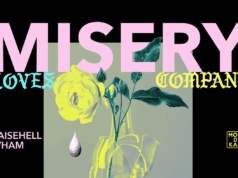Christina Quisumbing Ramilo

May 13 – June 7, 2021
Finale Art File | The Tall Gallery
2241 Chino Roces Ave, Makati, Metro Manila, Philippines
Website Facebook
This is the debris of labor.
Christina Quisumbing Ramilo brings focus to the invisible labor behind works of art by using accumulated discards from studios, workshops and the supply stores that she frequents. She brings into plain sight the hours of toil and chaotic reality that come with artists’ noble role in society to enlighten, critique and record. Despite their unique position in shaping culture and politics, most artists live within a precarious economic situation. Unlike other stable wage earners, artistic labor has no fixed value.
With her distinct purist approach, Ramilo handles the detritus with minimal intervention to the conditions they were found in. Contrary to the worthless nature of discards, recycling them poses a more difficult challenge than buying new materials. Their inherent limitations in size, shape, color and quantity are a struggle to assemble, like multiple complex puzzles. These large-scale compositions may appear seemingly random but are the product of minutely deliberate intentions. Grid-like patterns draw our attention to richly textured patina. Hence she treats the material with utmost respect, exploring the relationship between chance and order, error and possibility, revealing the intrinsic beauty in what has already been overlooked or cast away.
Throughout history, the use of humble materials for art has often been a means to dissolve the borders between art and life. Ramilo brings this principle to a more personal level by selecting discards from artist friends: their used paint rags, brushes and sandpaper, and from her own discards, including hundreds of receipts that highlight the endless expenses an artist must be able to cover in order to survive without a steady source of income. Receipts form a portrait of the consumer, and in this case a vast majority of them, apart from living expenses, are from hardware stores—the main source of material for an artist who primarily makes assemblage.
Each discarded item contains clues of the original owner’s purpose. Some sandpaper pieces are more thoroughly worn out than others, with tell-tell signs of paint colors, surfaces and edges they had been used on. Painters’ rags reveal to us their preferred color palettes. Scribbles to test inks at supply stores show us what type of pens strangers have considered purchasing for their needs. These are marks of history embedded into the materials and become part of their character, such that time itself is a collaborator in the finished product.
Ramilo spent many years working jobs that involved art-related labor, including supervising at the painting department of a bronze foundry, part-timing as a gallery art handler, working at an art supply store, teaching art at university and working at the Frick Art Reference Library. Her consciousness on labor intensified when she built her own house as a monumental assemblage of recycled architectural fragments. Approaching her 60th year, a diminishing capacity for manual labor has led her to adapt the scale of her works by making smaller objects installed into groupings that form larger assemblages. As one of the few female artists in the Philippines who constructs in massive scale, she challenges expectations of the type of labor associated with women.
The Tall Gallery has allowed Ramilo the most expansive presentation thus far reflective of her studio practice: often working simultaneously on pieces whose parts have been collected over decades. Inside the white cube, we are invited to see what she sees; the faintest details become more pronounced when taken outside of their daily setting. We are posed with notions of propriety and value and question assumptions surrounding labor. The dignity of labor as a source of inspiration and investigation is given center stage with the overwhelming significance of its debris.
~ Stephanie Frondoso






























